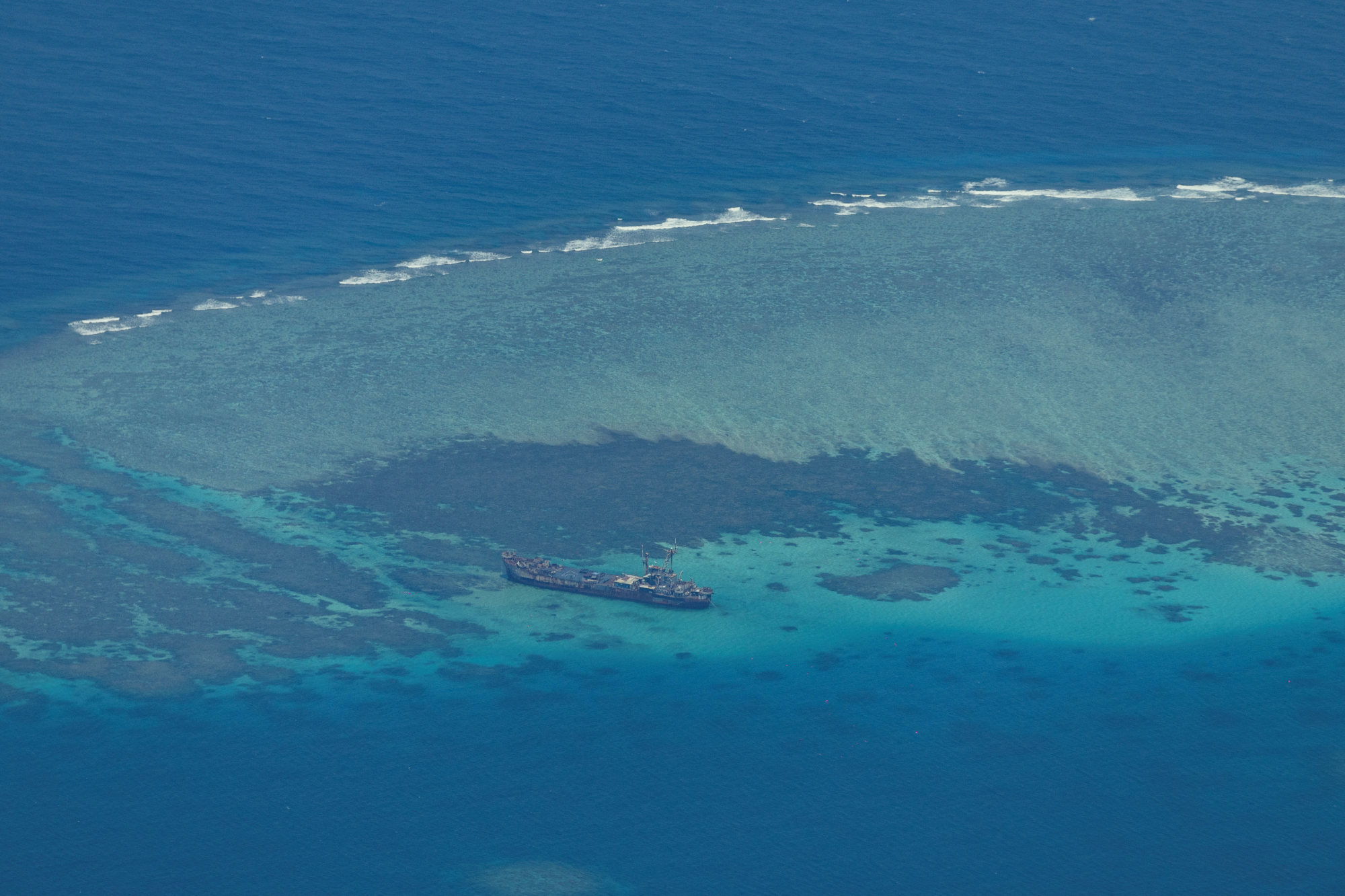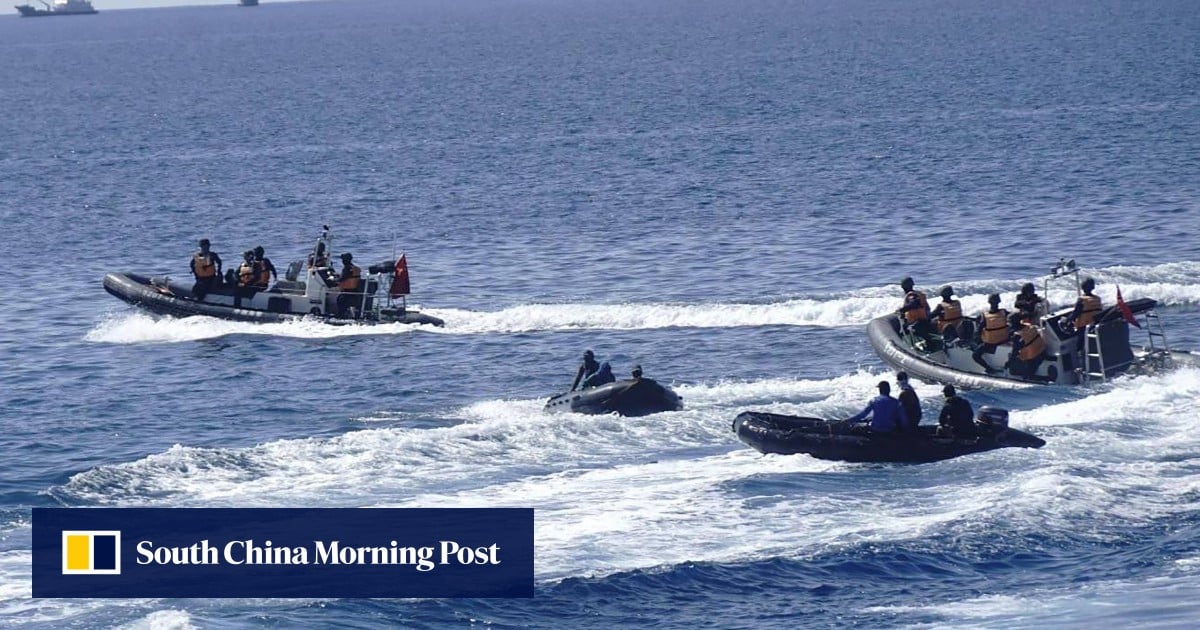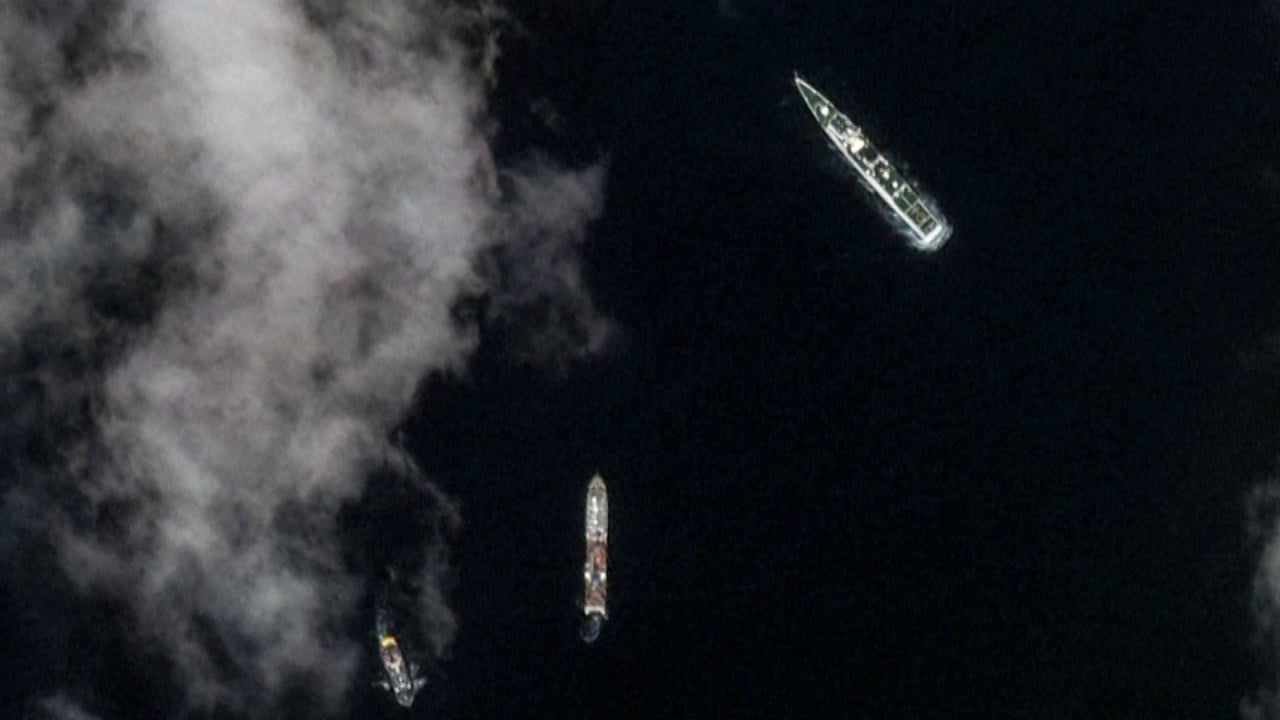In response, Philippine military spokesman Colonel Xerxes Trinidad said: “We will not dignify the deceptive and misleading claims of the China coastguard.”
It was the third time since August that the Chinese coastguard has accused a Philippine vessel of deliberately causing a collision.
The incident was also the first since the Chinese coastguard on Saturday began enforcing a policy to detain foreigners for up to 60 days if they were found to have “illegally entered China’s territorial waters and the adjacent waters”.

However, Trinidad noted that the Second Thomas Shoal “is well within our [exclusive economic zone]”.
Monday’s collision took place during a Philippine resupply mission to the BRP Sierra Madre, a World War II-era navy vessel purposefully grounded on the Second Thomas Shoal to act as an outpost that would bolster Manila’s territorial claims to the region.
Philippine Defence Chief Gilberto Teodoro slammed “China’s dangerous and reckless behaviour”. He said: “It should now be clear to the international community that China’s actions are the true obstacles to peace and stability in the South China Sea.”
US ambassador to Manila MaryKay Carlson said in a statement that “the United States condemns the PRC’s aggressive, dangerous manoeuvres near Ayungin [Second Thomas] Shoal, which caused bodily injury, damaged Philippine vessels, and hindered lawful maritime operations to supply food, water, and essential supplies to Philippine personnel within [its] exclusive economic zone. We stand by our allies in support of a free and open Indo-Pacific. “
The European Union’s ambassador to Manila Luc Veron expressed “deep concern” over China’s “dangerous actions” and that the EU “opposes coercion and intimidation in the South China Sea, or anywhere” and supports “peaceful dispute resolution”.
American security analyst Raymond Powell told This Week in Asia on Monday that around the time of the collision incident, China had three coastguard vessels and 21 fishing vessels swarming around the Second Thomas Shoal.
The director of SeaLight – a project based in Stanford University that aims to track maritime “grey zone” activities – said while his team was able to track the vessels, it was unclear from the data on the incident which vessel was responsible for Monday’s collision.
“All [Chinese coastguard] ships are running ‘dark’ on AIS,” Powell said, referring to the Automatic Identification System that ships were supposed to keep on while at sea to prevent collisions.
“I can’t tell from the ship tracking, since Philippine resupply vessels are too small to broadcast on Class A automatic information system, and it’s not clear which [Chinese coastguard] ship was involved,” he said.
However, Powell noted that “experience has demonstrated that these collisions happen when [Chinese] vessels block the path of the Philippine boats”.
“This is a continuation of the trend of escalation we’ve seen from China, which has been tightening its blockade around Second Thomas Shoal,” he added.
Former House defence committee vice-chairman Ruffy Biazon challenged Beijing to file a formal complaint against Manila before the International Maritime Organization (IMO), a United Nations agency in charge of cases involving vessel collisions.
Biazon wrote on social media platform X: “They are invoking the International Regulations for Preventing Collisions at Sea, the best thing for them to do is file a formal complaint at the IMO. But of course, they won’t do that because they know they have been violating it themselves for a long time now.”
Last Friday, the Group of Seven issued a statement siding with the Philippines on its maritime dispute with Beijing, saying, “we oppose China’s militarisation, and coercive and intimidation activities in the South China Sea”.


